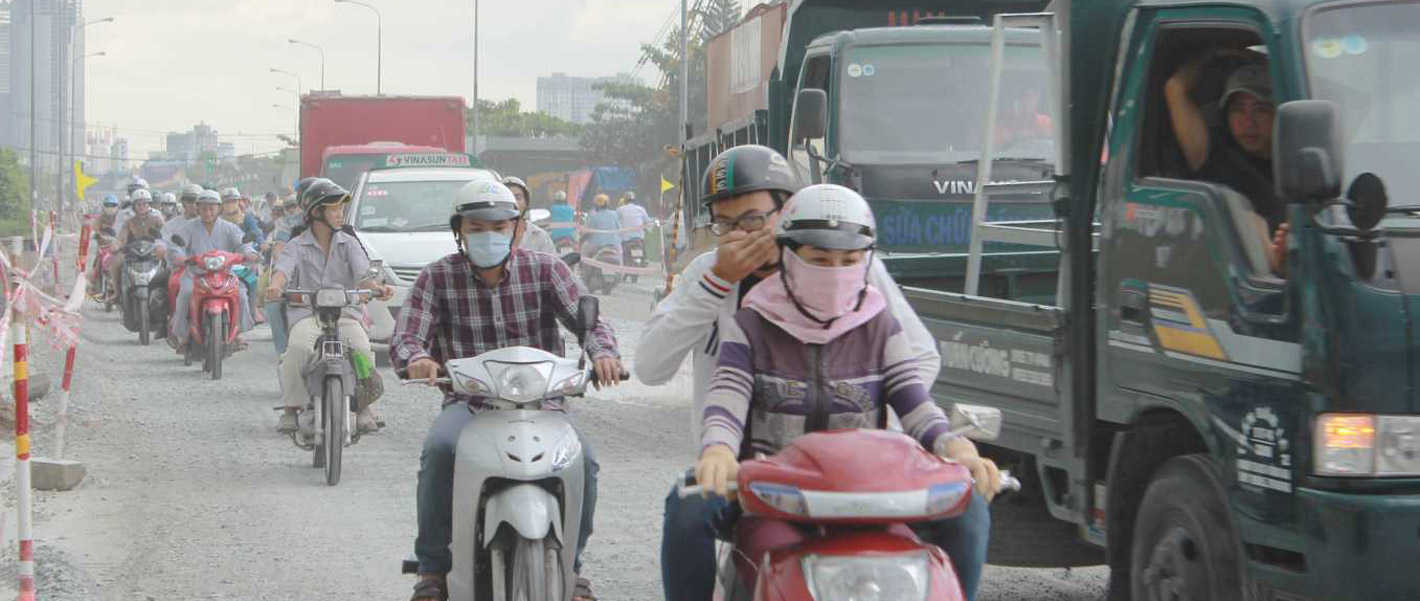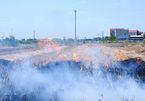There are two types of air pollution: dust (deposited dust, suspended dust, fine dust PM10, PM2.5 and nano dust) and gaseous (CO, SO2, NOx, O3 and VOCs).

The 2013 national environment report is the most complete report available. It showed that dust was the main pollutant, while most other parameters (NO2,SO2, CO and lead) were still within the permitted levels in accordance with national standards QCVN 05: 2013/BTNMT.
Experts said the data in the 2013 report was useful, but urged caution. However, to date, there is no other comprehensive report for use.
Research teams carried out projects on related issues, but the research scope was smaller, in a province or city.
|
The 2013 national environment report is the most complete report available. It showed that dust was the main pollutant, while most other parameters (NO2,SO2, CO and lead) were still within the permitted levels in accordance with national standards QCVN 05: 2013/BTNMT. |
“Vietnam still doesn’t have necessary data to serve understanding and management of air quality,” Hoang Xuan Co from the Hanoi University of Natural Resources said.
Data about emission sources exist, but no agency has come forward and collected the data to analyze it and make it usable.
Meanwhile, there are still no materials and standards to assess emissions from many sources, such as craft villages, agriculture and forest fires.
Scientists said emission stocktaking was not easy work because of the complexity of data and the inexperience of the management system. Besides, the work is difficult because of the lack of a policy on data sharing.
Co said some years ago, when carrying out a project on air quality assessment, the World Bank unsuccessfully sought data at state management agencies. He also tried to contact many agencies to collect data, but failed.
The data serves as important input for scientists to run models which predict air quality, and helps appropriate agencies draw up roadmaps for emissions reductions at the lowest possible cost.
Regarding the air monitoring network, Vietnam has 800 monitoring stations in 45 cities/provinces, including 640 stations developed by businesses.
However, the General Directorate of Environment admitted that the monitoring network in the country in general, and in Hanoi and HCMC in particular, remains thin.
According to Nguyen Thanh Binh, an independent researcher, the monitoring equipment at traditional stations can measure air quality with high accuracy, but it costs hundreds of million or billions of dong. Meanwhile, the other equipment, small and convenient, is less costly, but the accuracy is lower.
Thien Nhien

Air pollution more serious in Vietnam
An exhibition on air pollution titled “Feel The Air” unfolded in Saigon recently.

Straw burning worsens Hanoi suburban air pollution
Outlying districts in Hanoi have been badly affected by burning rice straw.
 There are three ‘pillars’ for air quality management, including data from emission sources, air monitoring data, and assessments about the human impact. Vietnam lacks data about all three.
There are three ‘pillars’ for air quality management, including data from emission sources, air monitoring data, and assessments about the human impact. Vietnam lacks data about all three.